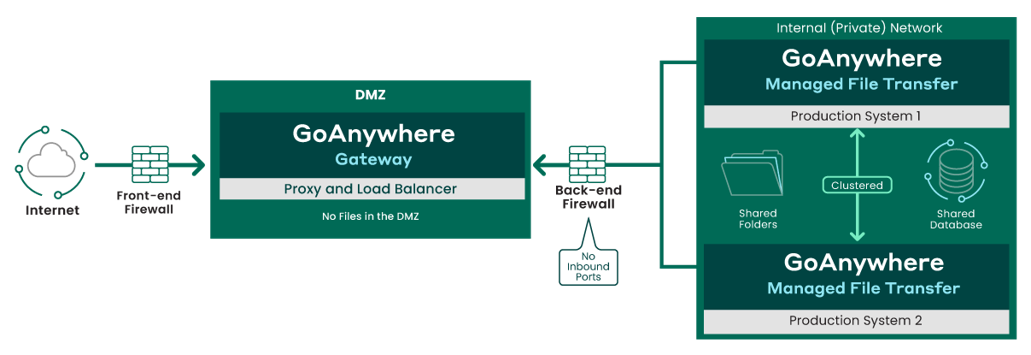GoAnywhere Gateway can serve as a load balancer for distributing workloads across multiple GoAnywhere MFT installations within a cluster, as well as other systems within your network. If a system was to fail in the cluster, then GoAnywhere Gateway will send all new trading partner connections to the remaining systems in the cluster. This active-active framework provides greater high availability for mission-critical environments.

As a load balancer, GoAnywhere Gateway spreads connections evenly across the clustered systems. This load balancing algorithm is called "round-robin", which is a common load balancing standard.
FTP, FTPS and SFTP will use the round robin algorithm to load balance connections across the systems in the cluster. For each new connection from a trading partner, GoAnywhere Gateway will distribute that session to the next FTP/FTPS/SFTP server (in sequential order) within the cluster.
HTTP/S is a stateless protocol which also uses the round robin algorithm, however it can persist each connection (for a period of time) to the same HTTP/S server in order to maintain the integrity of the session. This is important because the user's HTTP/S session is typically only able to be serviced by a single HTTP/S server at a time.